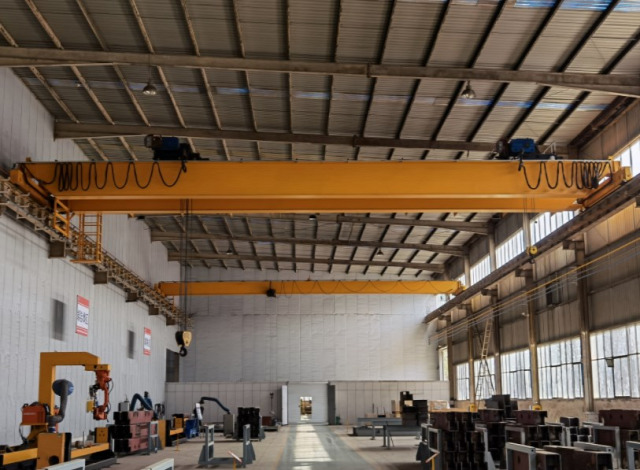Overhead cranes, also known as bridge cranes or industrial cranes, are essential material handling equipment used in various industries to lift and move heavy loads with precision and efficiency. The 25-ton overhead crane is a robust and powerful variant, capable of handling substantial loads in manufacturing plants, construction sites, shipyards, and more. In this article, we will provide a comprehensive overview of the components that make up a 25-ton overhead crane, highlighting their functions and importance in facilitating safe and efficient lifting operations.

Bridge Girder
The bridge girder, also referred to as the bridge beam or main beam, is the primary horizontal structure that spans the width of the crane's runway. It supports the trolley and hoist assembly and is responsible for carrying the load during lifting and traversing operations. The bridge girder is usually made of structural steel and designed to handle the crane's rated capacity.
End Trucks
End trucks are wheeled structures mounted on each end of the bridge girder. They house the wheels that run along the crane's runway beams, allowing the crane to traverse along the length of the runway. End trucks are equipped with powerful motors and drive mechanisms to ensure smooth and controlled movement.
Trolley
The trolley is the horizontal mechanism that travels along the length of the bridge girder. It houses the lifting equipment, including the hoist and load hook. The trolley moves in a cross-travel direction and enables the overhead crane 25 ton to position the load precisely.
Hoist
The hoist is the component responsible for lifting and lowering the load. In a 25-ton overhead crane, the hoist is designed to handle heavy loads up to 25 tons safely. The hoist mechanism includes a motor, drum, gear assembly, and brake system to ensure controlled lifting and lowering operations.
Load Hook
The load hook is the attachment point from which the load is suspended. It is an essential component that must be designed to withstand the maximum load capacity of the crane. Load hooks are typically equipped with safety latches to prevent accidental disengagement of the load.
Pendant Control or Cabin Control
Overhead cranes can be controlled either by a pendant control suspended from the trolley or by a cabin control attached to the bridge girder. Pendant controls allow operators to control the crane from ground level, while cabin controls provide a more comfortable and elevated operating position.
Motors and Drive Systems
The 25-ton overhead crane is equipped with powerful motors that drive the trolley and bridge movement. These motors are controlled by variable frequency drives (VFDs) or other control systems, allowing smooth acceleration, deceleration, and precise positioning of the crane.
Electrical Panel
The electrical panel houses the various electrical components and control systems that operate the crane. It contains the main control switches, relays, circuit breakers, and safety features. Proper electrical maintenance is essential to ensure the crane operates reliably and safely.
Festooning System
The festooning system is a set of cables and/or hoses that supply power and control signals to the moving components of the crane, such as the trolley and hoist. The festooning system ensures uninterrupted power supply and communication during the crane's movements.
Limit Switches and Safety Devices
Limit switches are crucial safety devices that prevent the crane from over-traveling in both longitudinal and cross-travel directions. They automatically stop the crane when it reaches the end of its permitted range. Additionally, safety features such as overload protection and emergency stop buttons are integrated into the crane's control system to ensure safe operations.
Conclusion
The 25-ton overhead crane is a formidable material handling solution that requires a well-designed and reliable set of components to handle heavy loads efficiently and safely. From the sturdy bridge girder and end trucks to the powerful hoist and trolley mechanism, each component plays a vital role in facilitating smooth and precise lifting operations. Proper maintenance and adherence to safety guidelines are essential to ensure the longevity and reliable performance of the overhead bridge crane, ensuring it continues to be a valuable asset in a wide range of industrial applications.

